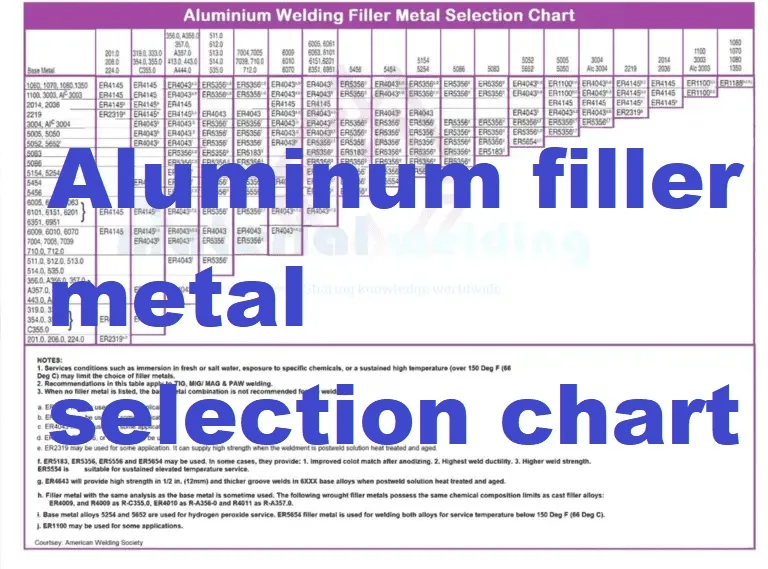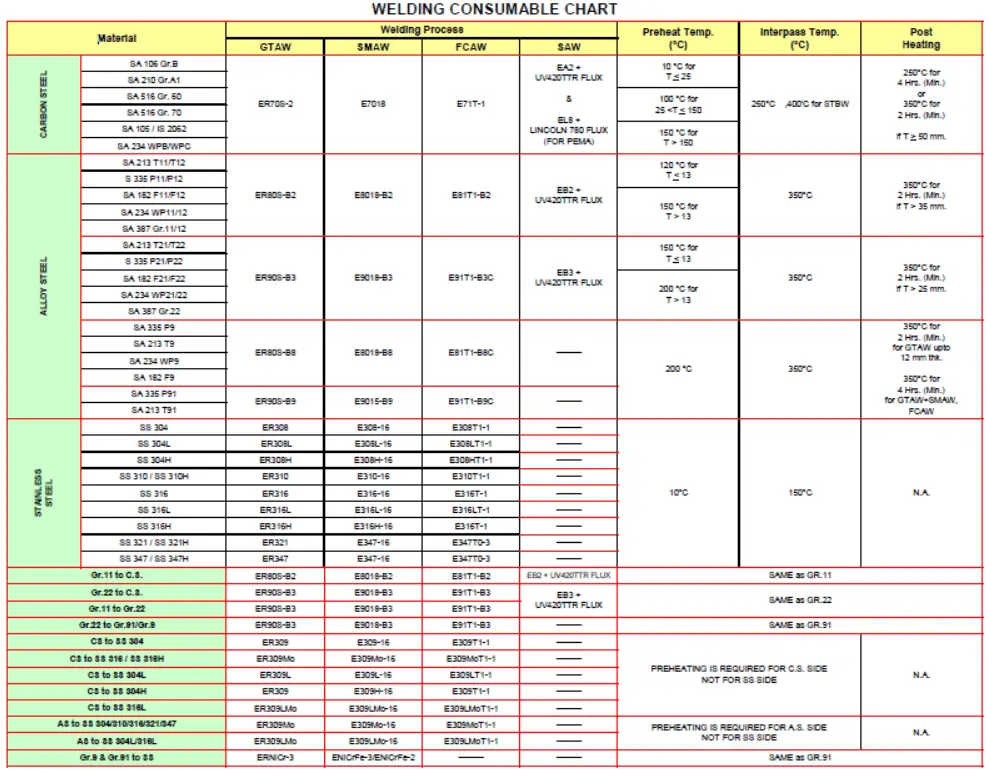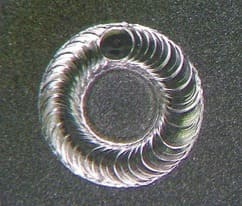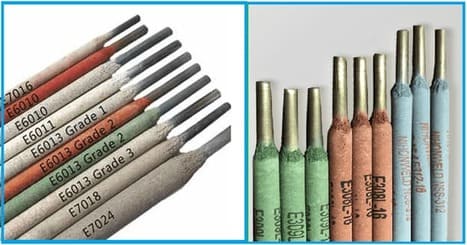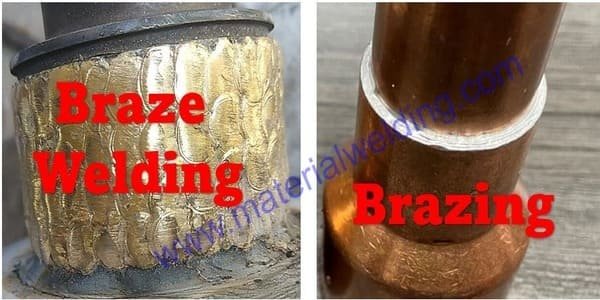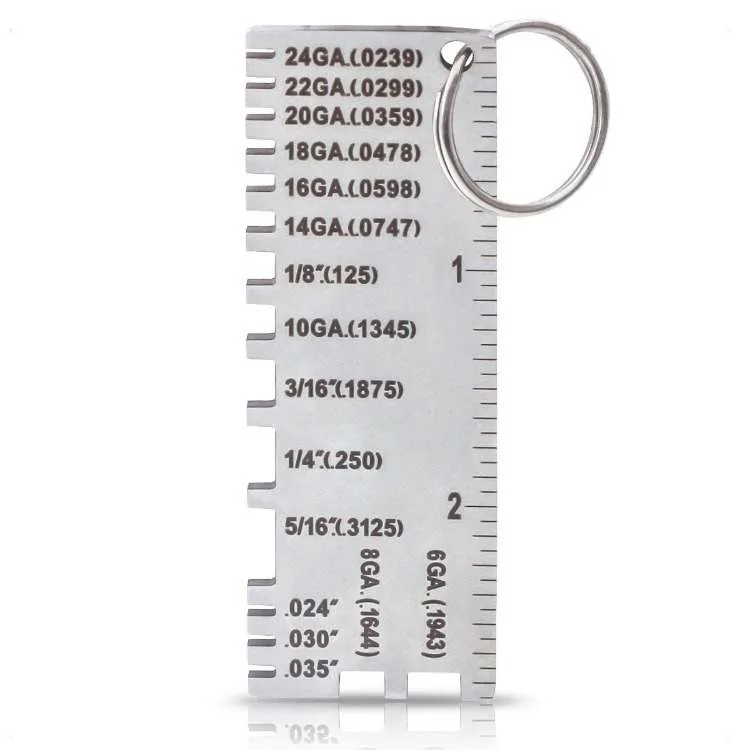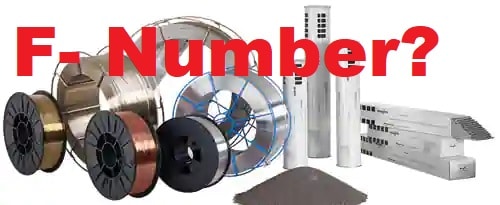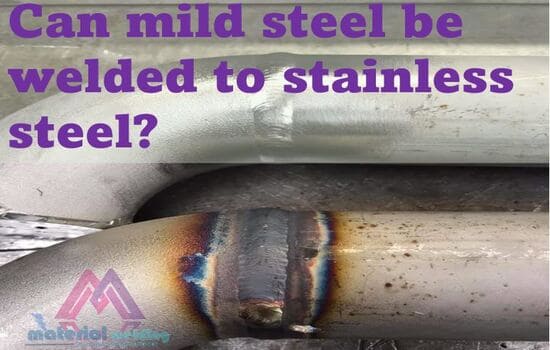TIG welding filler rod chart
Tig welding is a complex and precise process that requires the right tools and techniques to be used correctly. Knowing which filler rod to use during the welding process is an important part of achieving successful welds.
This article provides an overview of tig welding filler rod chart pdf (you can download it free), which can help users find the right type of rod for their particular job needs. The chart contains detailed descriptions of the different types of rods available for use in TIG welding processes, as well as their respective characteristics and applications.
To ensure an optimal welding job, it is important for welders to understand which type of filler rod should be used for different materials.
Understanding Tig Welding Filler Rods
Tig welding is a widely used form of welding that allows for precise control over the weld and the type of filler rod being used. To achieve the desired result, it is important to understand what makes different types of Tig welding rods unique.
The type of rod used in Tig welding will depend on the metal and application being welded, as well as the desired outcome. The most common types of Tig filler rods are mild steel, stainless steel, aluminum, nickel-based alloys, magnesium alloys and copper-based alloys.
Each has its own characteristics that affect how they handle heat and their ability to bond metals together. Mild steel rods are ideal for general purpose welding jobs but will not work well on aluminum or stainless-steel or other non-ferrous metals applications.
Types of Filler Rods Used in Tig Welding
Tig welding is a popular welding technique used in the fabrication of many different products across industries. A major component of tig welding involves the use of filler rods to add additional material to areas where two distinct metals are joined together. The use of Autogenous TIG welding is limited for sheet metals only.
There are a variety of different types of filler rods used when tig welding, each with its own unique properties and applications.
Mild Steel TIG Welding Rods
The first type of filler rod commonly used in tig welding is mild steel, which is easy to use and relatively inexpensive compared to other materials. Mild steel has low levels of carbon and offers good strength with easy weldability. Mild steel TIG welding rods are classified in AWS A5.18 Specification and CSA W48.
The most commonly mild steel TIG welding rods are:
- AWS A5.18 ER70S-2 (CSA W48 ER495-2).
- AWS A5.18 ER70S-3 (CSA W48 ER495-3)
- AWS A5.18 ER70S-6 (CSA W48 ER495-3).
- ER70S-4, ER70S-5 & ER70S-7 (not commonly used TIG wires).
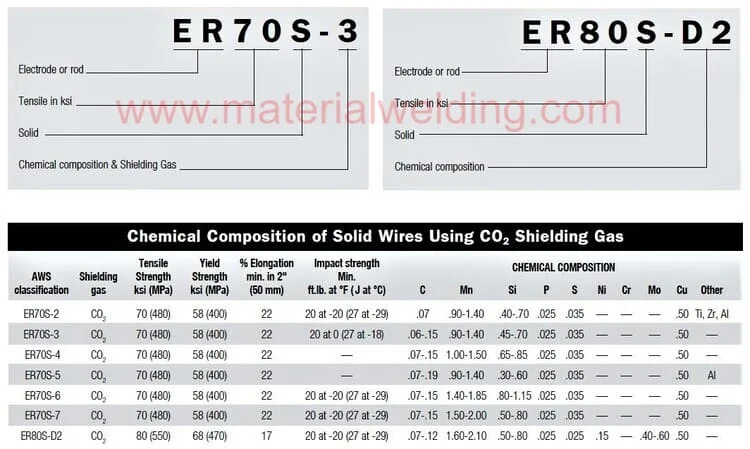
Stainless Steel TIG Welding Rods
A second type of filler rod often used in tig welding is stainless steel. Stainless steel TIG welding rods, classified in AWS A5.9 specification, are widely used for fabricating and repairing metal structures.
Among the most common types of tig welding rods are ER308L, ER309L, ER310, ER316L, ER321 and ER347. ER308L is primarily used for welding austenitic stainless steels such as 304 and 304L.
ER309L suitable for joining dissimilar metals such as mild steel to stainless steel. On the other hand, ER310 can be employed when welding high-temperature materials such as heat-resistant chromium or nickel alloys.
Below is chart to select tig welding rod for different stainless steel grades. On X-axis & Y-axis, base metals are given. By matching them as shown in grey color, you can find the suitable tig welding rod for any stainless steel material grade.
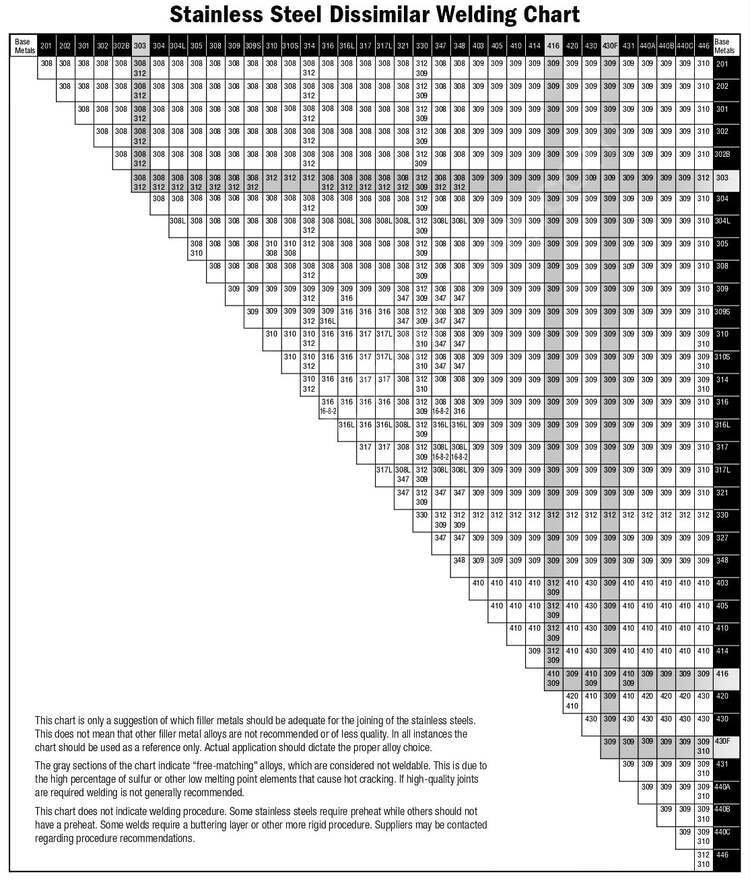
Low alloy steel TIG Welding Rods
Low alloy steel TIG welding rods are specialized filler metals that are used in TIG welding to join together different low alloy steel grades. These welding rods are classified according to the AWS A5.28 specification, which establishes the requirements for their composition and mechanical properties.
The rods are designed for use with low alloy steel materials such as Cr-Mo, Manganese, Nickel, C-Mo, Military, and other high strength low alloy steel grades such as AISI 4140 and AISI 8620.
Below are the most commonly used low alloy steel TIG welding rod chart highlighting the type of alloy welding, they can be used.
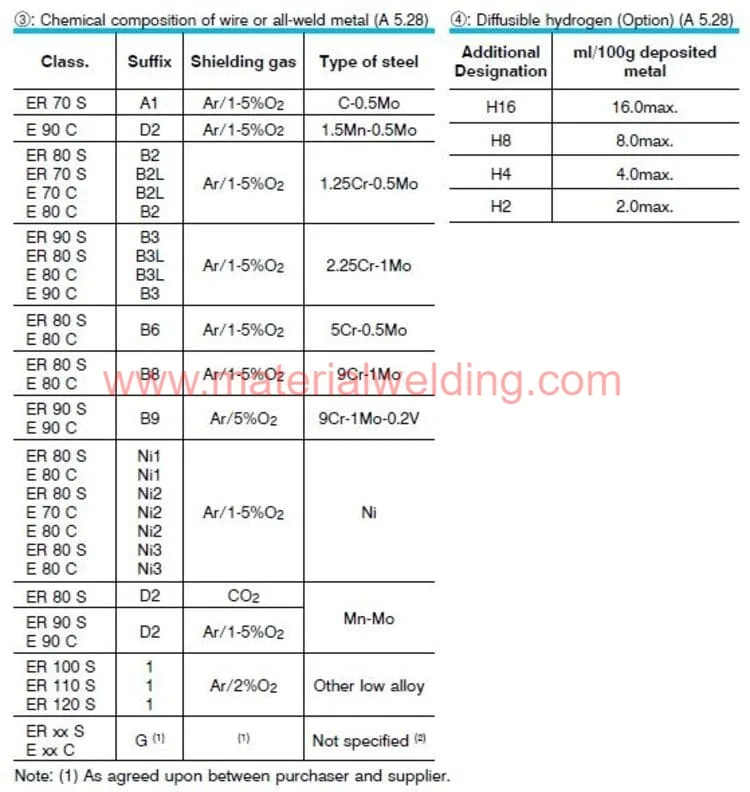
Compared to traditional mild steel welding rods, low alloy steel TIG welding rods offer several benefits in terms of strength, toughness, and crack resistance.
These welding rods offer improved strength, toughness, and crack resistance compared to mild steel welding rods, making them suitable for use in applications that require high levels of strength and durability.
This makes them an ideal choice for welding applications that require exceptional levels of durability and reliability. For example, they are often used in the construction of structures, pipes, and boilers, as well as for repair and maintenance work.
Copper alloy TIG Welding Rods
Copper alloy TIG welding rods are a type of filler metal used in TIG welding to join different copper alloys (such as brass, bronze) as well as welding copper alloys to mild steel.
Related Reading:
These rods are classified according to the AWS A5.7 specification, which outlines the requirements for their composition and performance.
The AWS A5.7 specification includes a variety of different copper alloy TIG welding rods (given in below table), each with specific properties and characteristics that make them suitable for different welding applications.
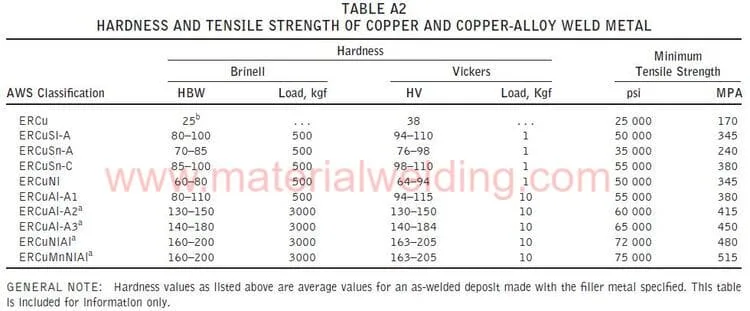
For example, ERCu is a common copper alloy TIG welding rod that is used for welding copper and copper alloys. It is known for its good electrical and thermal conductivity, making it a popular choice for electrical applications.
Another example is ERCuNi, which is a nickel-copper alloy TIG welding rod that is often used for welding nickel alloys and other corrosion-resistant metals. This welding rod offers excellent resistance to corrosion, making it ideal for use in harsh environments.
In contrast, ERCuAl-A1 and ERCuAl-A2 are aluminum-copper alloy TIG welding rods that are used for welding aluminum bronze, brass and their dissimilar welding applications.
These welding rods are known for their high thermal conductivity, low melting point, and good fluidity, making them suitable for welding thin-walled aluminum components.
Another example is ERCuMnNiAl, which is a nickel-copper-manganese-aluminum alloy TIG welding rod that is often used for welding high-temperature alloys. This welding rod offers high strength and resistance to creep, making it ideal for use in high-stress applications.
Aluminum TIG welding rods
Aluminum TIG welding rods, classified under the AWS A5.10 specification, are filler rods used for welding aluminum alloys. The two most common aluminum TIG welding rods are ER4043 and ER5356.
ER4043 is a general-purpose filler rod that is often used for welding aluminum alloys with a medium to high strength, including the 6xxx series alloys.
This filler rod is known for its good fluidity and crack resistance, making it a good choice for welding aluminum in a variety of applications.
ER5356, on the other hand, is a higher-strength filler rod that is commonly used for welding aluminum alloys with a high strength, such as the 5xxx series alloys.
This filler rod is known for its high strength and good corrosion resistance, making it a popular choice for welding aluminum in harsh environments.
Titanium TIG Welding Rods
Titanium TIG welding rods are characterized by their high strength, low density, and excellent corrosion resistance, making them suitable for use in a wide range of applications, particularly in harsh environments.
Related reading: Titanium TIG Welding Guide.
These rods are classified according to the AWS A5.16 specification, which outlines the requirements for their composition and performance.
The AWS A5.16 specification includes a variety of different titanium TIG welding rods, each with specific properties and characteristics that make them suitable for different welding applications.
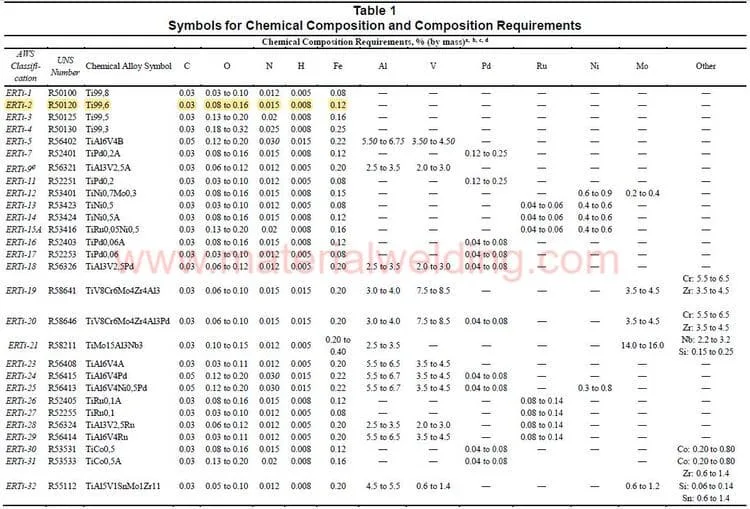
The most common titanium TIG welding rods include ERTi-1, ERTi-2, ERTi-3, and ERTi-4, which are the basic grades of commercially pure titanium.
These rods are characterized by their high strength-to-weight ratio, excellent corrosion resistance, and low density, making them ideal for use in various industries, including aerospace, marine, and medical.
For example, ERTi-1 is a pure form of titanium with a high level of corrosion resistance and low ductility, making it ideal for welding in corrosive environments. ERTi-2 is a higher strength grade of titanium, offering improved mechanical properties over ERTi-1, while ERTi-3 and ERTi-4 offer even higher strength and improved toughness.
In addition to the basic grades, the AWS A5.16 specification also includes a list of other titanium TIG welding rods, each with specific chemical compositions and properties.
The exact chemical compositions of these rods, as well as the complete list of titanium TIG welding rods, can be found in the table provided in the AWS A5.16 specification (table shown above).
Tips for Choosing the Right Filler Rod
When choosing the right filler rod for TIG welding, consider the following tips:
- Base metal: The filler rod must match the base metal in terms of composition and welding requirements. For example, if the base metal is a stainless steel, the filler rod must also be a stainless steel.
- Welding position: The filler rod should be suitable for the welding position, whether it’s flat, horizontal, vertical, or overhead.
- Welding environment: The filler rod must be able to withstand the environmental conditions of the welding area, such as heat, moisture, and corrosive substances.
- Welding thickness: The filler rod must have the right diameter and be able to handle the thickness of the base metal being welded.
- Weld strength: The filler rod must provide the required strength and toughness for the intended application.
- Weld appearance: The filler rod must produce a visually appealing weld that is free of cracks, porosity, and other defects.
- Welding costs: The filler rod should be cost-effective, taking into consideration factors such as the price of the rod, the ease of use, and the overall cost of welding.
- Welding efficiency: The filler rod must be easy to use and promote efficient welding, with minimal wastage and consistent results.
In conclusion, choosing the right filler rod for TIG welding requires a careful consideration of the welding environment, the base metal, and the desired weld outcome.
By taking these factors into account, you can select the best filler rod for your specific TIG welding requirements, ensuring optimal performance and high-quality results.
Understanding the Numbers and Symbols on a Filler Rod Chart PDF
Carbon steel and low alloy steel TIG wires meaning
ER70S-3 is a classification of a TIG (Tungsten Inert Gas) filler rod.
- The “ER” stands for “Electrode Rod,” the
- “70” refers to the minimum tensile strength of the weld deposit in thousands of pounds per square inch (ksi), and the
- “S” designates that it is a solid wire.
- “3” indicates its chemical compositions.

Similarly,
ER80S-D2 is a classification of a low alloy steel TIG (Tungsten Inert Gas) filler rod. The classification consists of several components, each indicating specific properties of the filler rod:
- ER: Electrode Rod
- 80: Minimum tensile strength of the weld deposit in thousands of pounds per square inch (ksi)
- S: Solid wire
- D2: weld wire chemistry as explained in table earlier for low alloy steel tig wires.
Stainless steel TIG welding wire meaning
Below is an example for ER308L stainless steel tig welding wire rod.
In ER308L, the meaning of each digits are:
- “ER” mean electrode,
- “308” means the weld metal type,
- “L” means Low carbon.
You may notice “H” or “Mo” or “Ni” in place of “L“, where H means high carbon, Mo means added molybdenum and Ni means added Nickel in the rod.

Aluminum TIG welding wire meaning
In the below example, meaning of ER4943 aluminum welding rod meaning is explained.
- ER means Rod,
- 4 means aluminum silicon alloy series.
- 9 refers to alloy modification,
- 43 is the specific alloy grade.
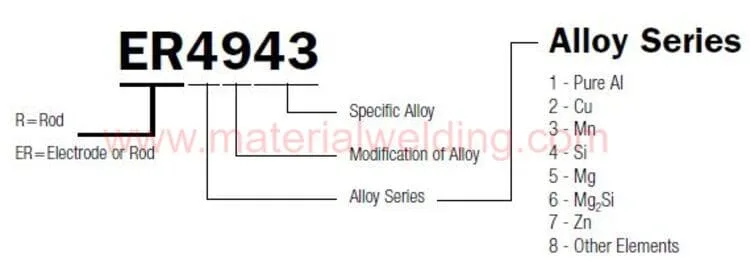
Recommended Amperage Settings for Various TIG Filler Rods
To determine the best amperage and voltage settings for a specific TIG filler rod consider factors such as the welding position, base metal thickness, and desired welding speed.
It’s also important to consider the type of shielding gas being used, as this can impact the welding performance and quality.
In general, the amperage and voltage settings for TIG welding should be adjusted according to the filler rod diameter, welding position, and base metal thickness.
As a starting point, it’s common to use an amperage setting of 80-100 amps for welding with a 1/16-inch filler rod, and to adjust the voltage accordingly to achieve the desired weld penetration and appearance.
